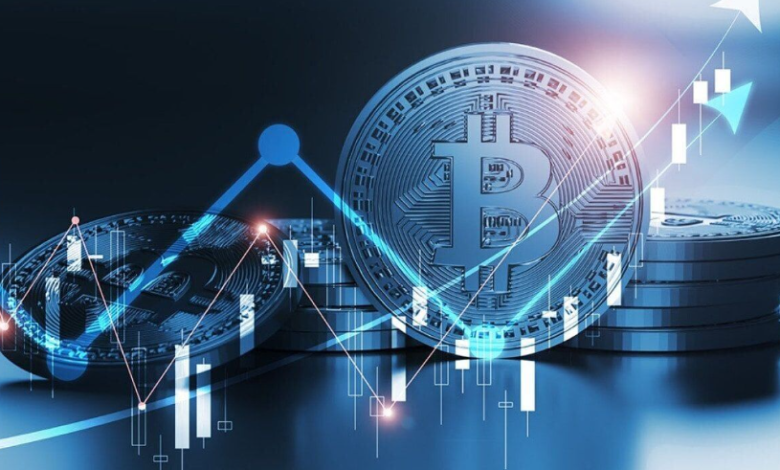What Drives Solana Price Fluctuations? Understanding the Market Forces

Solana, one of the leading blockchain platforms in the cryptocurrency space, has garnered significant attention for its speed, scalability, and low transaction costs. Its price, however, can be quite volatile, fluctuating dramatically due to a variety of factors that influence market behavior. Understanding these market forces is crucial for anyone interested in investing or participating in the Solana ecosystem. In this article, we will explore the primary drivers behind Solana price fluctuations, giving you a better understanding of what impacts its value.
1. Market Sentiment and Demand
Like all cryptocurrencies, the Solana price is heavily influenced by market sentiment. Positive news, technological advancements, and growing adoption can drive demand, pushing the price higher. On the other hand, negative events, regulatory concerns, or broader market downturns can cause the Solana price to fall.
Cryptocurrency markets are often driven by emotions such as fear and greed. When investors believe in the future growth of Solana, they are more likely to buy, creating upward pressure on the price. Conversely, when market participants become cautious or fear regulatory crackdowns, the Solana price may decrease due to selling pressure.
2. Technological Developments and Upgrades
Solana’s underlying technology plays a significant role in shaping its market value. The network’s unique Proof of History (PoH) consensus mechanism allows it to process transactions at a much faster rate and lower cost than many other blockchains. Any updates or improvements in the Solana network, such as enhanced scalability or new use cases, can create excitement among investors and developers, leading to an increase in the Solana price.
For instance, the successful implementation of updates that increase the speed or decrease the transaction costs could significantly boost Solana’s demand and price. Conversely, if Solana faces technical issues or network downtimes, this could damage its reputation and lead to a decrease in price.
3. Institutional Adoption and Partnerships
As more institutions explore blockchain technology, their involvement can have a massive impact on the Solana price. Institutional investors typically have larger financial resources and are able to bring stability or volatility to the market, depending on their actions. For instance, when companies like venture capitalists or large financial institutions begin to invest in or integrate Solana into their operations, it can create bullish sentiment, pushing the price upwards.
Strategic partnerships with major companies or adoption by prominent decentralized finance (DeFi) platforms can also drive demand for Solana’s native token, SOL, thus influencing the Solana price. These collaborations often serve as a validation of Solana’s technology and use case, which in turn can have a positive effect on its price.
4. Macro-Economic Factors and Cryptocurrency Market Trends
The cryptocurrency market is highly influenced by broader economic trends. Macroeconomic factors such as inflation rates, interest rates, and global financial instability can all play a role in the price of Solana and other cryptocurrencies. When traditional markets are volatile, investors may seek the perceived safety or growth potential offered by digital assets like Solana. However, if traditional markets perform well, or if interest rates rise, investors may pull their capital from riskier assets like Solana, causing its price to fall.
In addition, the overall health of the cryptocurrency market significantly impacts the Solana price. If Bitcoin and Ethereum, the two largest cryptocurrencies by market cap, experience significant price movements, they tend to influence the rest of the market, including Solana. For investors looking to track market movements and make informed decisions, monitoring BTC price, SOL price and other major promising altcoins rates such as XLM to USD provides valuable insights into market sentiment and potential investment opportunities across the cryptocurrency ecosystem.
5. Regulatory News and Government Policies
Government regulations are a critical factor in the price fluctuations of cryptocurrencies, including Solana. Regulatory uncertainty in key markets like the United States, China, and the European Union can introduce volatility, as investors may fear that stricter rules will limit the potential for growth or even restrict the use of Solana and other cryptocurrencies. On the other hand, favorable regulatory developments can lead to price increases as they create a more secure and predictable environment for investors.
For example, a country legalizing the use of cryptocurrencies for payments or investment could significantly boost the Solana price, while news of a government crackdown could have the opposite effect.
6. Supply and Demand Mechanics
The total supply of Solana is capped, meaning there is a finite amount of SOL tokens in circulation. As demand increases, scarcity can drive the Solana price upwards. Conversely, if the demand for Solana decreases or if there is an oversupply of SOL tokens, the price may fall.
The supply of Solana can also be affected by staking mechanisms. Solana allows users to stake their SOL tokens to help secure the network and earn rewards. The amount of Solana being staked can influence the circulating supply and, in turn, impact the Solana price. If large amounts of SOL are staked and locked away, this reduces the available supply on the open market, which can drive the price up.
7. Competition from Other Blockchains
Solana is not the only blockchain platform focused on scalability, speed, and low transaction fees. It faces competition from other major platforms like Ethereum, Binance Smart Chain, and newer entrants like Avalanche and Polkadot. The success or failure of these competing platforms can have a direct impact on the Solana price. If another blockchain becomes more widely adopted or offers better features, it could siphon demand away from Solana, potentially lowering its price.
On the flip side, if Solana is able to distinguish itself and secure a larger share of the market, its price could rise as it gains more users, developers, and applications.
8. Network Activity and Usage
The level of activity on the Solana network itself is another important factor influencing the price of SOL. The number of transactions, decentralized applications (dApps) being built, and overall usage of the network can indicate the health of the ecosystem. When Solana experiences increased transaction volume and adoption in various sectors (e.g., DeFi, NFTs, gaming), it creates a more robust network effect, which can drive up demand for the SOL token.
If the network experiences problems such as slowdowns or outages, it could harm investor confidence and lead to a decline in Solana price.
Conclusion
In conclusion, the price fluctuations of Solana are driven by a combination of technological, economic, market, and regulatory factors. By keeping an eye on these influences, investors and participants in the Solana ecosystem can better anticipate potential price movements and make more informed decisions. While Solana’s technology and strong ecosystem provide a solid foundation, external factors such as market sentiment, macroeconomic trends, and competition from other blockchains will continue to play a crucial role in shaping its price.
Understanding the forces that drive Solana price fluctuations is key to navigating the volatile cryptocurrency market. With its innovative technology and growing ecosystem, Solana has the potential for significant growth, but it also faces inherent risks and uncertainties that could impact its price in the future.




